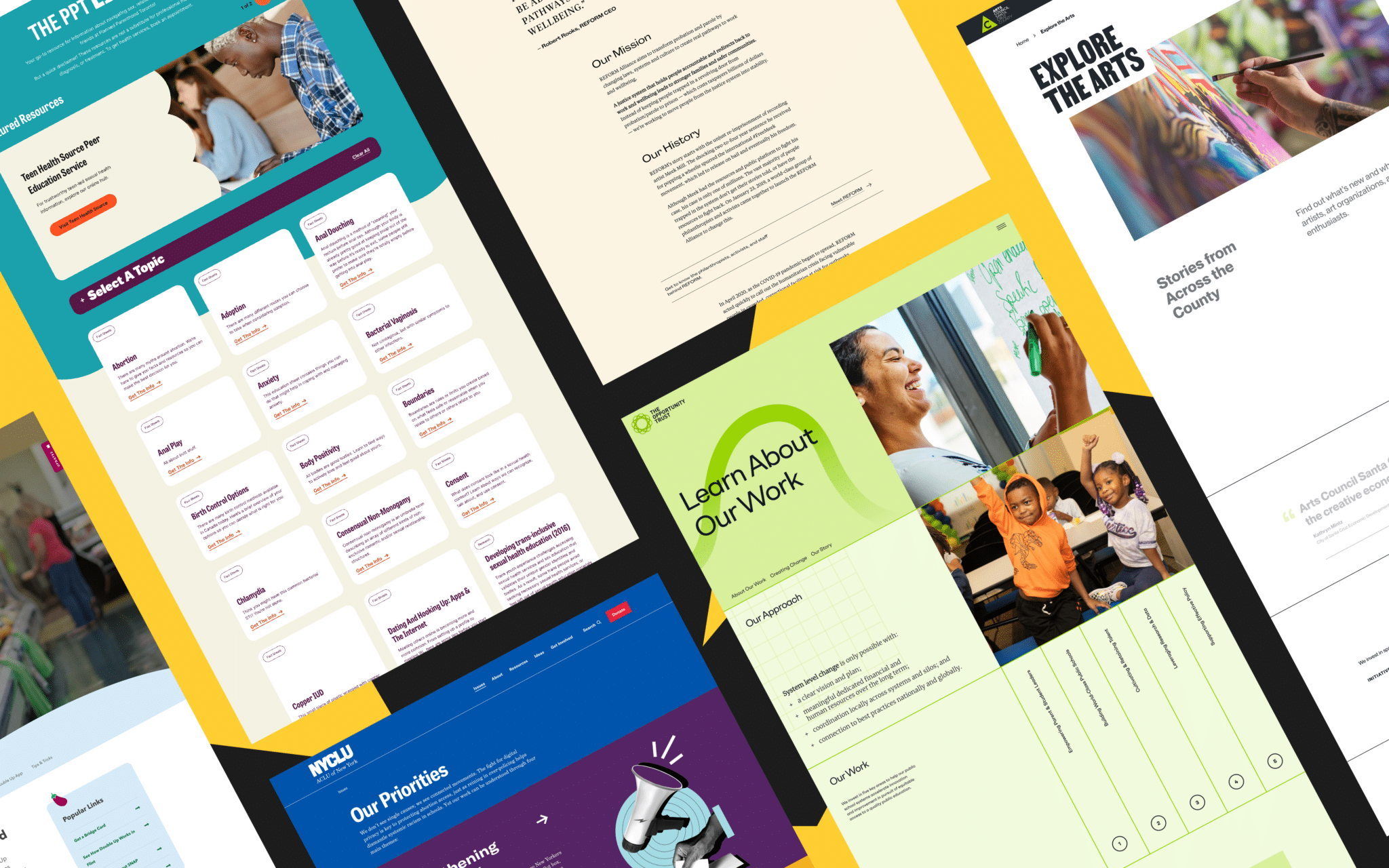The Role of User-Centered Website Design in Increasing Customer Retention
The Role of User-Centered Website Design in Increasing Customer Retention
Blog Article
Increase Engagement With Cutting-edge Internet Site Design Solutions
A thoughtfully crafted user experience, underpinned by strategic visual layout and interactive elements, can dramatically enhance individual interaction. By exploring different methodologies such as receptive layout and tailored material, services can produce a system that not just astounds users but also promotes lasting commitment.

Comprehending Customer Experience
Recognizing individual experience (UX) is important for creating reliable web site design remedies, as it straight influences exactly how individuals engage with digital systems. An extensive UX strategy includes various aspects, consisting of ease of access, usability, and user complete satisfaction, every one of which add to the total performance of a website.
To begin with, use focuses on how conveniently users can browse and locate the details they seek. Access ensures that all customers, consisting of those with specials needs, can properly connect with the web site.
Moreover, recognizing customer personalities is essential for customizing the experience to fulfill certain audience requirements. By performing customer research and screening, developers can gather insights that inform design decisions, making sure the website not just fulfills visual objectives yet also meets practical demands. Eventually, a thoughtful technique to UX style fosters engagement, motivates retention, and improves general customer satisfaction, which are crucial for the success of any kind of digital system.
Visual Design Strategies
Including effective aesthetic style methods is necessary for recording customer attention and improving the total customer experience on a site. A well-balanced aesthetic power structure overviews customers with the web content, enabling them to quickly take in and navigate info. This can be accomplished via the tactical usage of typography, color pattern, and spacing, which collectively create a interesting and natural format.
Color plays a critical function in establishing and stimulating feelings brand name identification. Utilizing a well balanced color combination that lines up with the brand's values can cultivate familiarity and trust fund. In addition, including top quality pictures and graphics enhances aesthetic appeal and can substantially improve customer engagement.
Whitespace, commonly neglected, is equally important as it allows content to breathe and prevents overwhelming users with mess. It helps with simpler analysis and comprehension, bring about an extra pleasurable searching experience.
Finally, uniformity in design aspects-- such as switch designs, icons, and typefaces-- guarantees a seamless user trip, enhancing the brand's professionalism and reliability. By strategically implementing these visual style techniques, websites can not only bring in visitors but also urge them to remain longer and engage more deeply with the web content.
Interactive Components for Interaction
Involving customers efficiently often depends upon the implementation of interactive aspects that welcome involvement and promote a dynamic surfing experience. These aspects, including tests, surveys, and interactive infographics, urge individuals to proactively participate as opposed to passively consume content. By integrating such functions, web sites can not just record interest however likewise boost individual retention.

Gamification is one more effective approach. Incorporating game-like components, such as success or rewards for finishing jobs, can transform ordinary interactions into pleasurable experiences. This approach not just improves engagement however also urges users to return, creating a devoted target market.
Furthermore, interactive aspects can facilitate social sharing, amplifying a web site's reach. Attributes like remark areas, share switches, and user-generated content areas foster area communication, transforming site visitors right into active individuals. website design. Eventually, the calculated usage of interactive components is vital for developing a engaging and interesting website that resonates with individuals
Responsive and Flexible Style
A well-designed website needs to prioritize flexible and responsive style to make certain optimum individual experiences across a range of gadgets and screen dimensions. Receptive design employs fluid grids and flexible pictures, allowing the format to automatically change based on the customer's display dimension. This technique guarantees that customers can easily browse and communicate with the content, despite whether they are utilizing a desktop computer, tablet, or smart device.
In contrast, adaptive style uses predefined designs that are customized to details gadget groups. This suggests that the site discovers the more helpful hints sort of tool being utilized and serves the suitable layout, which can enhance loading times and enhance the display of important components. While both strategies intend to boost usability, responsive design is commonly favored for its fluidness and smooth change in between tools.
Integrating adaptive and responsive design not only enhances customer contentment yet likewise positively affects search engine rankings. Search engines focus on mobile-friendly sites, hence increasing visibility and attracting more visitors. Spending in these style methods is essential for companies looking to involve their audience properly and maintain an affordable edge in today's digital landscape. website design.
Analyzing Individual Comments and Information
User comments and data evaluation are crucial parts of efficient internet site design, as they provide useful understandings into customer actions and preferences. By systematically examining and accumulating customer feedback through studies, functionality testing, and analytics tools, developers can determine pain factors and locations for improvement. This data-driven strategy makes it possible for companies to tweak their web browse around this web-site site aspects, making certain that the individual experience straightens with audience expectations.
Assessing metrics such as bounce rates, time on page, and click-through rates supplies a quantitative perspective on user engagement. These metrics help developers discern which content reverberates and which areas might call for optimization. In addition, A/B testing can be used to evaluate variations in style, permitting developers to make enlightened decisions based on user interactions.
Integrating customer responses not only enhances site functionality however also promotes a sense of area and trust. Involving with customers through responses loopholes cultivates loyalty and encourages repeat sees. Ultimately, leveraging user feedback and data evaluation is integral to creating a vibrant, user-centered site that adjusts to developing customer requirements and preferences, consequently driving higher interaction and fulfillment.
Verdict

A thoughtfully crafted user experience, underpinned by calculated aesthetic design and interactive elements, can considerably enhance customer interaction.Incorporating effective visual design techniques is necessary for capturing user interest and improving the total individual experience on an internet site.User feedback and data analysis are important elements of efficient website design, as they provide useful insights into user behavior and choices. Eventually, leveraging individual responses and data analysis is important to creating a vibrant, user-centered website that adapts to developing user requirements and preferences, therefore driving greater interaction and fulfillment.
In conclusion, innovative site design solutions dramatically improve individual interaction by prioritizing customer experience, employing reliable aesthetic techniques, and incorporating interactive elements.
Report this page